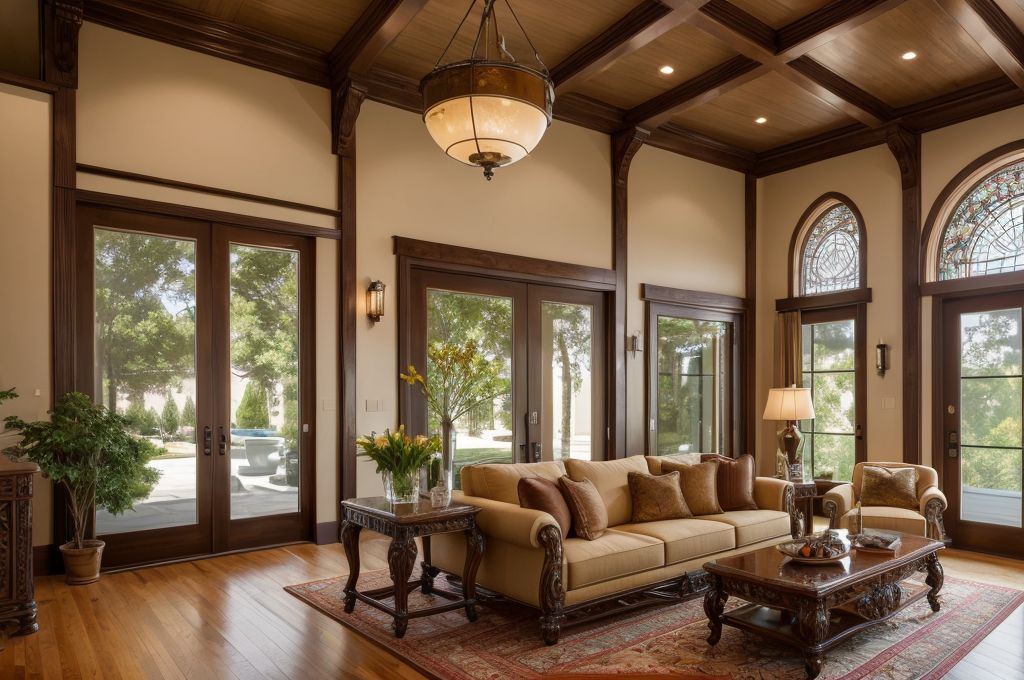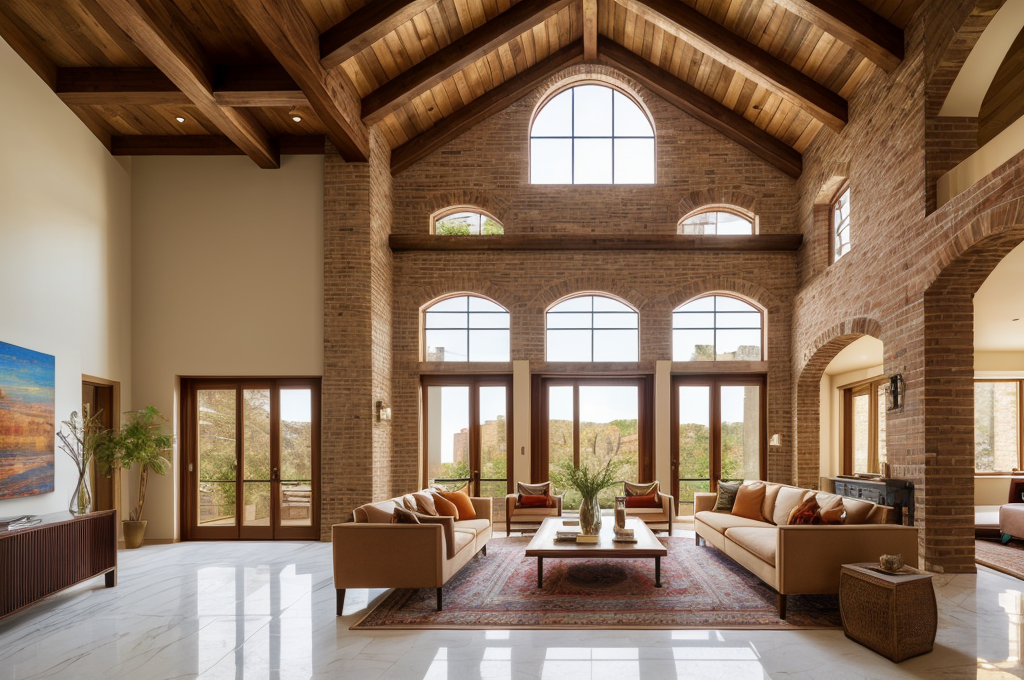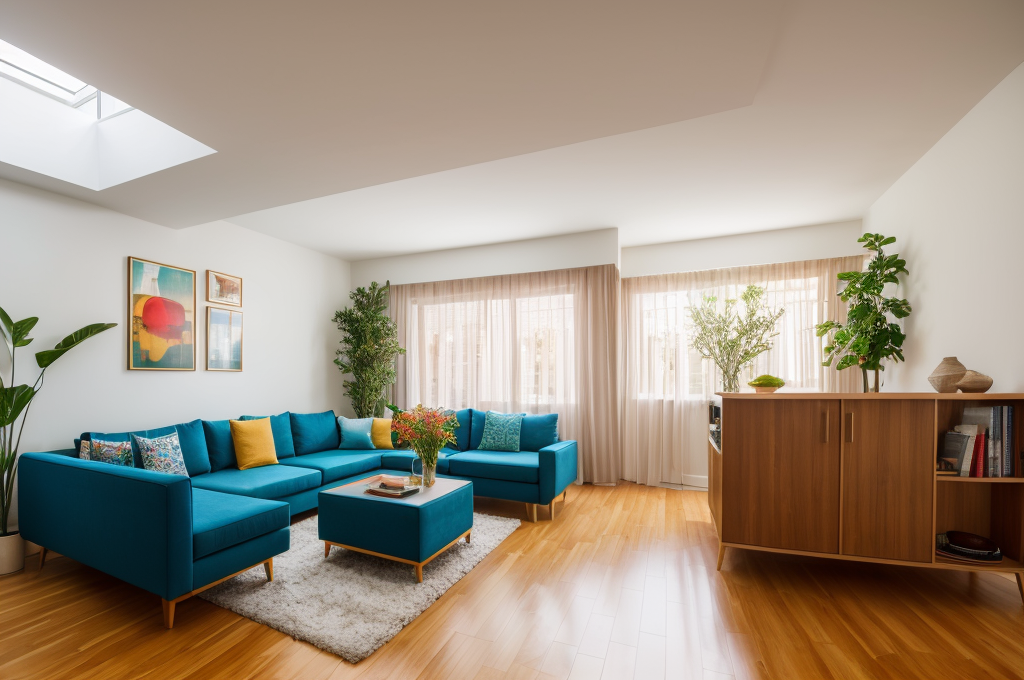Harmonizing Past and Present: The Charm of Incorporating Old-Fashioned Details into Modern Home Design

The article explores the resurgence of old-fashioned house features like Dutch doors and dumbwaiters in hipstoric homes, reflecting a trend of blending traditional and contemporary styles, while valuing skilled craftsmanship.
Significance of Old-Fashioned House Details
As we embrace the future with new model house interior design, there’s a certain charm associated with incorporating traditional elements into modern households. It’s like a tender nod to our architectural heritage that simultaneously adds character and uniqueness to our homes.
Definition and Value of Dutch Doors
Let’s discuss Dutch Doors, shall we? Often seen in farmhouse style designs, Dutch Doors add an old world charm that is hard to resist. Split horizontally in the middle, the doors allow for fresh air and light to waft in, while keeping pets and children safely inside. The unique style and practicability of these doors make them quite a preferred choice in modern home designs.
Purpose and Modern Utility of Dumbwaiters
Now let’s talk about the unsung heroes of old fashioned homes Dumbwaiters. Originating from a time before elevators, dumbwaiters were used for transporting food between floors. But imagine utilizing this in our contemporary homes? It would serve as the perfect handy tool to move laundry, groceries or even serve snacks at a party making it both a quaint and versatile addition to the modern household.
The Role of Skilled Craftsmanship
The integration of such traditional elements into our homes is no easy task. It demands the artistry of skilled craftsmen who can maintain the character of the house whilst imbuing it with the homeowners’ personal flair. This fusion of old world craftsmanship with the new is not just about the design, it’s about preserving and cherishing our architectural roots in a contemporary setting.
It’s about creating a space that stands as a testament to curated design choices and functionality that seamlessly blend the old with the new.

The Concept of Hipstoric Homes
The term ’hipstoric’ may be unfamiliar to some, but for those in the world of interior design like me, it represents an exhilarating dance of styles. A blend of history and hip, these spaces nod to the past while aligning with the present.
Definition of Hipstoric Homes
It’s a fascinating concept, really. Envision decorating a room with a stately antique chaise, paired seamlessly with modern art. The vibrant energy of the old and the new co existing brings to mind a medieval house interior design with a modern twist.
Harmony of Old and New Styles
In the realm of hipstoric’, we are dealing with antique attributes that whisper stories of yesterdays, harmoniously mixed with modern themes that shout of today’s evolution. Like the sweet and salty treat that wins over our taste buds so effortlessly, so does this fusion in a home’s design create an unusual satisfying impact on the eye.
Examples of Hipstoric Houses
Several professional designers have embraced this hipstoric trend. They’ve taken up the creative challenge of intertwining historical character with modern spirit. It’s something I find exceptionally interesting and dreadful at the same time. There’s a delicate balance to respecting the architectural authenticity of a space while injecting it with contemporary trends.
In essence, ’hipstoric’ homes are a testament to the evolution of taste, recognizing that beauty can indeed reside in the amalgamation of different eras. It’s about crafting a narrative within our living spaces that’s as rich and diverse as our experiences, embracing the old while thriving in the new. These chronicles told through design might even inspire future trends, leading us to further imaginative intersections of styles.
The Process of Preserving and Updating Old Houses
The art of preserving and modernizing houses with historical significance is a task I relish. It is not merely about equipping them with modern amenities but is about striking a balance between past and present. And in doing so, it gives birth to a beautiful interplay of styles of house interior design.
Importance of Preserving Heritage Features
The charm and character of old residences often lie in their unique heritage features those ornate crown moldings, original hardwood floors, and timeless brick facades. These special details carry legacies from the past that deserve to be carried forward. 🌟 Preserving them elevates the aesthetics of a home while witnessing a tale of its history.
Strategies for Modernizing Heritage Houses
From my experience, the key to modernizing aged houses rests in honoring their heritage while introducing relevant contemporary elements. Designers and architects weave new life into these architectures, ensuring that modern aesthetics blend seamlessly with the historical roots. This strategic blend of old and new creates a space that does not shun its past but embraces it in today’s context. 🏠
Trend of Valuing the Interplay Between Old and New
Lately, I’ve noticed a heartening shift towards valuing the interplay between old and new in the world of interior design. This harmony showcases an appreciation for the richness of old world charm and the sleekness of modern designs. And this is not just a passing trend but a dynamic dialogue that continues to enrich the language of interior design.
In essence, the journey of preserving and updating old homes transcends just a design challenge. It’s about breathing new life into age old stories, encapsulating them into the fabric of today’s styles, and crafting a living testament to a time and place of yore. 🏡

Reimagining Old-Fashioned Features
As a seasoned interior designer, one of my favorite challenges is breathing new life into old fashioned design features. Such elements often reflect a timeless charm that enhances the beauty of a space when they’re creatively intertwined with modern styles. The art of interweaving these disparate elements doesn’t just show interior designs house, but it unveils a stylish aesthetic for contemporary homes.
The Charm of Traditional Design Features
Traditional features, from classic chandeliers with crystal droplets to tufted furniture and intricate millwork, exude an essence of charm that is timeless. They don’t just represent a mere design style, but a historical origin, a story waiting to be told — all of which can potentially enrich the character and personality of any modern home.
Strategies for Combining Tradition with Modernity
The key to successfully combining tradition with modernity lies in achieving a balance. By carefully selecting certain vintage features and pairing them with sleek, minimalist modern elements, we can create a uniquely eclectic design. Think of a farmhouse table under a brass pendant light, or a rococo mirror on a plain white wall.
Benefits of a Unique Aesthetic in a Contemporary Setting
The beauty of this approach is that not only does it create a unique and idiosyncratic aesthetic for your home, it also creates a point of conversation. The reimagined old fashioned features not only add intrigue but also a distinctive aesthetic appeal that blends perfectly with the contemporary design scheme.
Thus, reviving quaint features and seamlessly integrating them with modern elements can create an enchanting medley of styles that’s not only aesthetically pleasing but also deeply personal and resonant. And as an interior designer, being able to pull off such a feat, is one of the most rewarding aspects of my profession.
Key Takeaways
Importance of Respecting and Valuing Heritage
As someone with great respect for the history and artistry behind design, I cannot stress enough the importance of valuing and respecting heritage. Those old, quaint details in a medieval house interior design can often bring an unparalleled charm and practicality to a space that simply cannot be replicated in any new model house interior design. They carry stories and histories, making these details an important part of our design heritage and worth preserving.
The Balance of Heritage and Modernism
I often find myself drawn toward what’s been coined as ”hipstoric” interior styles. What this captures is a blend of old and new elements, creating a bridge between heritage and modernism, particularly in terms of house interior design. The growing trend supports the idea that the appreciation for the past and the anticipation for the future can coexist beautifully within a space.
Role of Innovation in Updating Old-fashioned Homes
I believe that innovation plays a significant role in spaces that seamlessly balance the old and the new. As designers, we aim to keep up with emerging trends and styles of house interior design, but without disregard for the historical aspects of design. Therefore, techniques that include reimagining old fashioned elements and introducing them into modern design not only respect our design history but also allow us to push the boundaries of contemporary aesthetics and show interior designs house in a new light.
Finally, it’s all about creating appealing spaces without losing the charm and character of original design elements. It’s the exciting challenge of creating rooms that are all at once deeply historic and bracingly modern.
- Unlocking the Intricacies of Interior Design: Ranch-Style Homes and the Pursuit of Functionality
- Blending Tradition and Modernity: Exploring the Design of Nipa Hut and Trynagoal Tea House
- Enhancing Dining Experiences through Creative Interior Design and Rebranding in Burger Restaurants
- Mastering Home Renovation: The Crucial Roles of an Interior Designer and Effective Budget Management
- Understanding the Value of Interior Designers: Roles, Benefits, and Selection Process
- Exploring the Richness of Turkish Architecture and Interior Design through Adobe Stock and Pinterest
- Unveiling the Unique Characteristics and Design Elements of Ranch-Style Houses
- Embracing Openness and Personal Touch: The California Ranch House Interior Design Concept
- Embracing Warm Minimalism: The Rise of Brown Tones in Interior Design
- Enhancing Your New Home: Key Elements and Strategies in Interior Design
- Unveiling the Art of Luxury Interior Design: Exploration of Materials, Individual Style and Inspiration from Pinterest
- 13 Easy and Affordable Tips to Spruce Up Your Home Decor
- Exploring the Rich History and Distinctive Features of Tudor Architecture
- Exploring British Home Interiors: From Historical Evolution to Modern Adaptation
- Traversing the World of Interior Design: From Designer Profiles to DIY Ideas and Future-ready Furniture
- Contemporary Home Refinement: Leveraging Exposed Brick Design and Affordable, High-Quality Furnishings
- Exploring the Warmth and Charm of Modern Rustic Interior Design
- Enhancing Duplex and Triplex Interiors: An In-Depth Guide to Style, Lighting, and Effective Use of Space
- Creating Your Dream Bathroom: A Comprehensive Guide to Designs, Functionality, and Material Selection
- Creating Your Personal Spa: Insights into Modern Bathroom Design Trends



